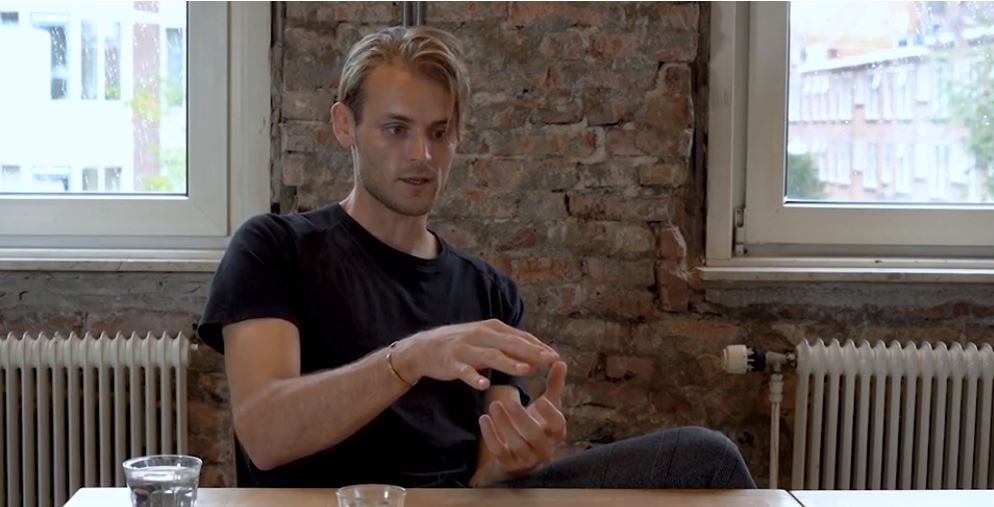This week the creative practitioners answer the following question:
– How do you develop a strategy and project plan for a client/audience in a continually evolving global market?

Torsten Posselt FELD, Studio for Digital Crafts, Berlin
Torsten thinks there are many different ways to approach a project strategically, and it may be best to do what works for you. He likes to meet with clients, face to face, as they tell him so much more in person than they ever could over an email or even a video conference. Communication is key to understanding the brief, the person and what they are hoping to achieve – Don’t be afraid to ask questions to get a better understanding of what is needed.
The framework for the project should be a live process in which things can change to suit the needs of everyone involved. It does no good to set parameters that will later hinder you or the client at a later stage.
The money and time side of things is much more stringent and doesn’t need the ability to move parameters. This can be set in stone at an earlier stage.

Matthew Jones and Michelle Dona Accept & Proceed, London
“Every project is different!”. Accept & Proceed like to hold workshops to really understand the neds of their clients, how they understand the brief and what their brand stands for. This often yields unexpected information which can be key for the entire project.

Wouter Dirks Studio Dumbar, Rotterdam
Whilst each project is unique at Studio Dumbar, they like to start by doing research – to understand the market, the client and the product. They too then arrange a workshop but like to include people from a variety of positions within the organisation. They then also speak with key stakeholders and partners, whether that be customers or other businesses or organisations.
Understanding the market is key for them. So much so, that they will do this process again, even if they have worked in exactly the same area before. They want to know their knowledge is completely up to date.

Stijn van de Ven Eden Spiekermann, Amsterdam
Stijn talks more about the company’s strategy as a whole and how they operate differently depending on their location and the image they want to portray. Because each of their offices (US and Europe) have different clients, styles and products to promote they need different approaches.

Luke Veerman Eden Spiekermann, Amsterdam
Luke discusses how it is important to be aware of what is happening globally and to look, not only at your interests but the interests of your client as well. This extends to customers too. If the product/brand is global, then you should speak with customers in different locations to understand what they think about the product and their views on the brand.
Of course, having office locations around the globe makes this type of research a lot easier!
Glug London: Katie Hui
What I really enjoyed about this presentation is that Katee looked beneath the issues on the surface. She researched to fully understand why the girls didn’t/couldn’t attend the sessions and then put in place solutions to enable them to play.
It is this strategic thinking which allowed the brand to grow into a powerful movement for societal change. It grew confidence allowing for a perceptive change in what a footballer looks like, what people think about female football and what the girls themselves can achieve.
‘This is what a footballer looks like’.
- Anyone can solve a problem they can see
- Be resourceful
- Collaborate always
Workshop Challenge
This week you will develop a strategy and project plan for your selected brief, to ensure your project aligns with its intended target audience.
- Develop a strategy and project plan for your selected project brief, to outline your objective, research, collaborators and aspiration for the final outcome. Utilise a variety of visual and written methods to support a full and innovative rationale for your project development.
- Upload your strategy and project plan to your blog and announce your intentions on the Ideas Wall.
- Create and voice record a five slide presentation to clearly articulate the rationale behind your strategy and project plan for your selected project brief.
- Your 5 slide voice recorded presentation can be created in the format of your choice (for example, a Keynote or Powerpoint slide presentation).
- Upload the final slide presentation to your blog

References
Monday.com. n.d. How to write a killer project plan in 6 simple steps. [online] Available at: <https://monday.com/blog/project-management/how-to-write-a-killer-project-plan-in-6-simple-steps/> [Accessed 10 December 2021].
Ray, S., 2018. Project Design in Project Management: A Quick Guide. [online] ProjectManager.com. Available at: <https://www.projectmanager.com/blog/project-design-in-project-management> [Accessed 10 December 2021].
Youtube.com. 2019. Glug London: Katee Hui. [online] Available at: <https://www.youtube.com/watch?v=HjsrrWzQMKQ> [Accessed 10 December 2021].
Youtube.com. 2019. Project Management – How to Break Down Projects. [online] Available at: <https://www.youtube.com/watch?v=zlnVc1nBTto> [Accessed 10 December 2021].
Phillips, P (2004) Creating the perfect design brief: how to manage design for strategic, New York, Allworth Press
Chapter 11: An example of a design brief. (Pages 141 – 160)
Chapter 12: Anticipating and overcoming obstacles. (Pages 161 – 166)
Chapter 13: Creating a plan for moving ahead. (Pages 167 – 172)






Leave a Reply